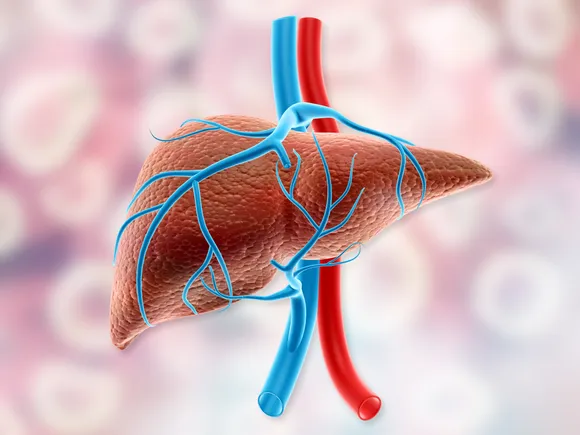Alnylam details anticipated results from heart disease drug trial


A medicine from Alnylam Pharmaceuticals slowed the progression of a deadly genetic heart condition, detailed study results from the company show. But whether treatment helps patients stay out of the hospital and live longer remains unclear, setting up a potential debate on the degree of benefit offered by the drug.
The data, from a closely watched Phase 3 trial known as APOLLO-B, were presented Thursday at a medical meeting in Europe. They have been highly anticipated since Alnylam said in August the study succeeded because they could change how the disease, known as transthyretin amyloidosis with cardiomyopathy, is treated and hand the biotechnology company its first blockbuster medicine.
Trial participants who received Alnylam’s drug, called patisiran and sold as Onpattro, walked a median of about 8 meters less in six minutes than they did at the study’s start. By comparison, the median distance walked by placebo recipients declined by roughly 21 meters over the course of the trial.
Detecting a positive treatment effect on the test, which is correlated with heart health, was the study’s main goal. Using certain statistical methods, researchers determined the difference between groups as a statistically significant 14.7 meters.
Patients on Onpattro also did better on a self-administered questionnaire evaluating their quality of life, scoring slightly higher at the trial’s end than at the start, while those on placebo declined by about 3.4 points.
Side effects were mostly mild to moderate in severity. There were no signs of heart problems related to Onpattro, a concern based on earlier tests. Infusion-related reactions, joint pain and muscle spasms occurred more frequently among those on Onpattro.
Alnylam expects to file for U.S. approval for Onpattro in transthyretin amyloidosis with cardiomyopathy later this year. The drug is already used to treat a different and less common form of the disease, which is called transthyretin amyloidosis with polyneuropathy and affects the nerves. More than 250,000 people globally are estimated to have the cardiomyopathy form.
“We’re seeing what would be seen in patients with a natural decline, or who are otherwise healthy. That’s encouraging,” said Akshay Vaishnaw, Alnylam’s president and chief scientific officer, in an interview. “The totality of the evidence indicates that this drug has great potential.”
Still, because of how its study was designed, Alnylam doesn’t know to what extent Onpattro can keep patients transthyretin amyloidosis with cardiomyopathy patients alive and out of the hospital. The FDA encouraged Alnylam to base its trial around the walking test because it was the fastest way to evaluate the drug, Vaishnaw said.
But that plan meant Alnylam had to prove Onpattro could work quickly, a challenge made harder by shifts in diagnosis and treatment. For years, no drugs were available for transthyretin amyloidosis with cardiomyopathy, in which the toxic buildup of a misfolded protein can lead to heart failure and death. The condition was often mistaken for other diseases and only identified later.
Patients now have a treatment available, a pill from Pfizer called Vyndamax, which the Food and Drug Administration approved in 2019. They’re also being identified earlier, when they’re less sick.
Those factors, along with the surprisingly strong performance of patients on placebo in an unsuccessful Phase 3 study run by BridgeBio Pharma, have led experts to suggest studies should be larger and run longer to detect a benefit. While comparisons across trials can be difficult, the six-minute walk scores of placebo patients in Pfizer’s trial declined by nearly 60 meters in a year. In BridgeBio’s study, their scores fell by 7 meters, and in Alnylam’s trial, by about 21.
From that perspective, John Berk, an APOLLO-B investigator and a physician who treats amyloidosis at Boston Medical Center, views Alnylam’s success in the trial as “remarkable.”
“Is it a gigantic difference? he said. “No, but under the circumstances it’s a pretty impressive one.”
“The standard of care obviously continues to evolve, but these patients are still very sick patients with a life-threatening disease,” added Vaishnaw, of Alnylam. “It’s not that the disease has been fundamentally transformed, as evidenced by what we’ve seen in this study.”
Still, the data could leave Alnylam with a commercial challenge. Vyndamax showed it can reduce the risk of hospitalizations and deaths, but its benefit only materialized later. The study had to be extended, ultimately running for two-and-a-half years, for the drug’s impact to become clear.
Onpattro doesn’t have that kind of supporting evidence yet. Alnylam said five patients in the study died while taking Onpattro, compared to eight of those who received placebo. For the purposes of calculating its drug’s benefit on all-cause mortality, however, Alnylam excluded deaths due to COVID-19 and counted heart transplants as an event per a preplanned analysis. One Onpattro-treated patient died from COVID-19, while two study volunteers given placebo had heart transplants.
Alnylam is also running a Phase 3 study of a similar but more convenient version of Onpattro known as Amvuttra. That trial is larger, longer and will hinge on Amvuttra’s ability to keep patients alive and out of the hospital. Results are expected early in 2024, according to Vaishnaw.
In the meantime, industry watchers and doctors are left to decide what Onpattro’s results mean for patients. In a research note published prior to the results, RBC Capital Markets analyst Luca Issi wrote that a walking test difference in the “teens,” as Alnylam has now reported, would likely add to an ongoing debate as to whether the findings are “statistically significant but not clinically relevant.”
Berk, however, expects clearer results in the future as previous studies of Onpattro in polyneuropathy showed signs of an effect on heart damage.
“I’m a believer of using this drug early and often transthyretin amyloidosis cardiomyopathy,” he said. “I think it’s going to significantly outperform the available [treatment].”
This post has been syndicated from a third-party source. View the original article here.




